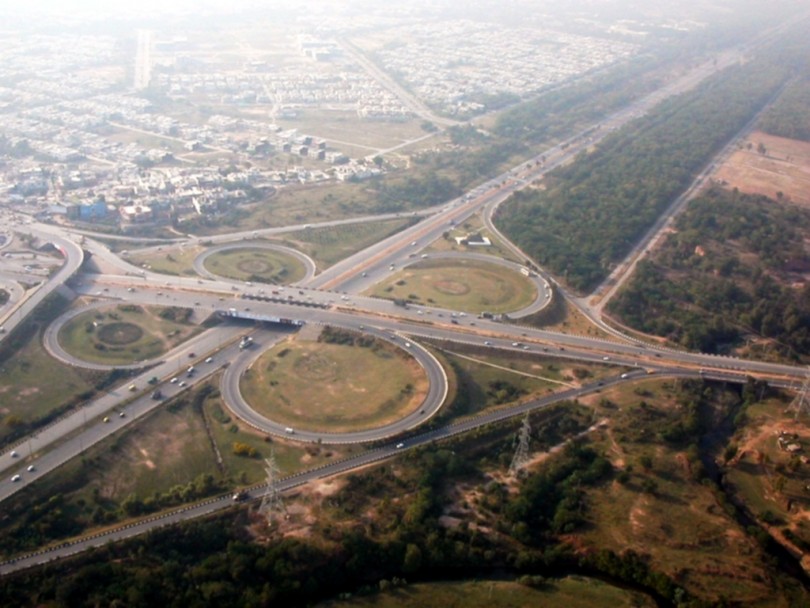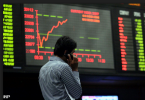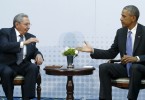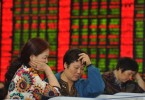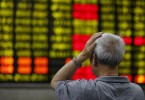Year 2015 has been very positive for Pakistan, in respect of its economic outlook compared to the past two decades. Since 2007, Pakistan has been hit by severe power crisis, which in turn have had a big impact on Pakistan’s economic growth. Global recession and higher oil prices further deepened Pakistan’s economic downturn. Three years back it seemed Pakistan will take almost a decade or two to recover from the crisis, and the economy was heading towards disaster but a series of steps taken by the Government and some opportunities that presented itself last year as well as this year, showed that Pakistan can overcome economic crisis within five years’ time. Let us evaluate the key factors that contributed towards the positive outlook of Pakistan’s economic growth, and the factors that need to be taken into consideration to achieve the forecasted growth, as per international economic bodies, within the next few years.
International Credit Rating of Pakistan
In March 2015, Moody’s Investors Service raised Pakistan’s credit outlook rating from stable to positive. Pakistan’s credit rating has been upgraded for the first time since 2006. This rating is based on extending external liquidity position, continued efforts towards fiscal consolidation and Pakistan Governments steady progress in achieving structural reforms as per IMF program.
In May 2015, S&P followed Moody and upgraded Pakistan’s credit rating from stable to Positive. Improving finances, low inflation, economic reforms and lower energy prices contributed towards Pakistan’s economic optimism. IMF has forecasted Pakistan’s economic growth to 4.5% for fiscal year 2015-2017, which is quite positive as compared to previous year’s forecasted growth of 3.6%
Stock Market Index Rally
The benchmark KSE100 stock index has rallied 56 percent since mid-2013 and according to Bloomberg, Pakistan ranked third in 2014 amongst the Top Ten Best Performing Markets in the world. Also, Pakistan has been able to secure a place amongst the Top Ten for the third consecutive year now. Moreover, in the MSCI Asian Frontier Markets, Pakistan ranked number one – outpacing Sri Lanka, Vietnam and Bangladesh by a big margin.KSE-100 Index gained 6,870 points thereby generating a handsome return of 31% return in US$ terms. The year 2014 was one of the best years in the Pakistani capital market history for mega public offerings led by sale of shares by the Government of Pakistan, and in terms of money raised through these offerings. Total offerings in the year 2014 reached 9 as compared to 3 in the year 2013.
After a gap of almost seven years, Rs73 billion were raised through offerings in 2014, as compared to a meager Rs4 billion raised in 2013. Higher foreign inflows during the year can also be counted as a major market boost. This positive performance of the capital market can be attributed to a number of favorable factors, both at the political and economic front. Key factors which can be seen as contributing to the market’s bull run are Government’s business friendly reforms, improved macro-economic indicators including record forex reserve levels that almost doubled to $16 Billion this year, increased confidence shown by international donor agencies, government’s energy sector initiatives, significant interest shown by China to invest in Pakistan, and government’s plans and initiatives towards fast-track privatization.
Political Stability
Political stability is one of the key reasons for increase in foreign investment; stable rupee, low inflation, and GDP growth steadily ticking up. Pakistan in 2013 saw for the first time in history, a civilian to civilian handover of government, and that has brought optimism among foreign investors regarding Pakistan’s economic outlook.
Political stability is one of the key reasons for increase in foreign investment; stable rupee, low inflation, and GDP growth steadily ticking up. Pakistan in 2013 saw for the first time in history, a civilian to civilian handover of government, and that has brought optimism among foreign investors regarding Pakistan’s economic outlook.
In Mid-2014, we saw street protests in Islamabad with a massive number of people coming on the streets, which showed some indications of political instability in Pakistan. These protests however, ended within 3-4 months’ time, with no reports of major violence, and this factor somehow brought a sense of optimism that political stability in Pakistan has improved compared to previous years.
Curb on Terrorism
Year 2008 till Year 2011 saw huge number of terrorist attacks on key strategic infrastructure and important assets of Pakistan. These terrorist acts were acts of sabotage or a form of economic terrorism to limit foreign investment in the country and hurt the economy of Pakistan. Back in 2011, it seemed the terrorists had the upper hand, and were able to manage and strike at will at any place, at any time in the country, however, recent measures and operations taken by the military and civilian leadership of Pakistan has shown Pakistan’s resolve to curb terrorism from the roots.
Back in 2011, it seemed the terrorists had the upper hand, and were able to manage and strike at will at any place, at any time in the country, however, recent measures and operations taken by the military and civilian leadership of Pakistan has shown Pakistan’s resolve to curb terrorism from the roots.
These gains in the last 2-3 years, where terrorists have been unable to attack the key infrastructure of Pakistan, has improved the confidence of foreign investors, further adding towards improvement in Pakistan’s economic outlook. Foreign investors feel that business environment is getting stable and have room for further improvement in future.
Measures Required for Continuous Economics Growth
The fact that Pakistan can recover from economic crisis at a faster pace than assumed earlier, and credit ratings given to Pakistan by international bodies, speaks clearly of Pakistan’s seriousness to come out of crisis. However, for a continued and steady progress, some measures should be taken by the government of Pakistan to ensure a continuous economic growth:
A country with strong infrastructure, good communication, and transport network attracts foreign investments and multinational companies, which provide job opportunities to the locals.
-
Upgrade Existing Infrastructure and Build New Ones
A country with strong infrastructure, good communication, and transport network attracts foreign investments and multinational companies, which provide job opportunities to the locals. Pakistan’s prime focus should be in upgrading existing infrastructure and transport networks like roads, railways and airports, which makes it easier for multinational companies to do business in Pakistan.
Currently Pakistan has shown good progress in maintaining inflation level at 2% in year 2015 as compared to last year, which was 8%. One of the key reasons of reduced inflation level was reduction in crude oil prices around the world, which contributed towards reduction in price levels of commodities and goods sold in the market.
2. Creating Employment Opportunities
New employment opportunities and employment level are the key indicators that show, economy of the country is further improving. The number of jobs added on monthly basis in the country or new employment opportunities show that business in the country is continuously expanding and there is room for further growth. Unemployment level of Pakistan stands at 6% as of 2013 and latest unemployment level has not been released yet. Pakistan needs to ensure that unemployment level should reach below 4% in order to ensure continuous economic improvement.
Currently Pakistan has shown good progress in maintaining inflation level at 2% in year 2015 as compared to last year, which was 8%. One of the key reasons of reduced inflation level was reduction in crude oil prices around the world, which contributed towards reduction in price levels of commodities and goods sold in the market.
3. Inflation Rate Control
Inflation refers to rise in price level of commodities and goods purchased by the people. In short, it means high prices and less purchasing power of a nation. Higher inflation rate in a country leads to unhappiness of people against government which can lead to riots and protest and can further lead to political instability in a country, making the environment non friendly for business.
Currently Pakistan has shown good progress in maintaining inflation level at 2% in year 2015 as compared to last year, which was 8%. One of the key reasons of reduced inflation level was reduction in crude oil prices around the world, which contributed towards reduction in price levels of commodities and goods sold in the market.
4. Maintaining Interest Rates Near Zero
Interest rates set by central banks of countries play an important role in the development of economy. Low interest rate contributes towards strengthening economy of a country.
In 2008, when the world was hit by global recession, economy of USA was the first to get hit, and was severely affected with higher unemployment level and almost zero credit or lending from banks to do business. In order to tackle the situation, the Federal Reserve Bank came up with two things, one was to have a massive stimulus plan by the banks to increase the cash flow, and second was keeping interest rates near zero value. Interest near zero value helped big investors to invest in other places in the country rather than keeping funds in the banks, which generated huge cash flow in the society, as well as, improved the unemployment level, and added job growth. Within 3-4 years USA was able to get out of economic crisis.
Pakistan should follow along a similar pattern and keep interest rates near record zero, to increase spending and generate cash flow in the market, which in turn increases job growth and employment level and further strengthens economy.
5. Water, Power and Gas Availability
Power and Gas crisis was the main reason that Pakistan’s economy came under continuous pressure since 2007. Pakistan should take steps towards increased power generation through alternative (green energy) and traditional (coal, LNG, diesel) power generation methods to ensure that manufacturing industries are continuously supplied with power and gas for reduction in manufacturing cost price. This factor will make Pakistani products competitive and increase Pakistan’s export and locally manufactured products available in market.
More availability of products in the market will further add to reduction in price. Also availability of locally manufactured products in the market and increase in exports will support the overall economy of the country, and make the country self-dependent, rather than relying on loans from international banks.
Clean water supply to run industries, is also a basic requirement to support the country’s economy. Clean water improves sanitation conditions and reduces health risks and hazardous environments. A country with high number of diseases and unhealthy environment adds pressure to the economy, especially in the case of fatal diseases. Unhealthy areas make the country an undesirable place to work. Also, many industries require huge amounts of water for manufacturing process. Pakistan should build more water desalination and sweet water treatment plants, in order to meet future demands to fulfill the requirement for further economic improvement.
Pakistan should further provide economic reforms and business friendly environment in order to attract investors. Pakistan should also focus on establishing new steel industries and upgrading existing ones. Recently discovered high grade iron ore in the country has added new hopes that Pakistan can be one of the leading suppliers of steel related products and iron ore. Pakistan should setup special economic and industrial zones, and increase water and energy supply to enhance the pace of the economic recovery. If these steps are ensured, within a few years Pakistan can become one of the highest developed economies in Asia.
References:
http://www.economist.com/news/asia/21650175-lower-oil-prices-prove-be-boon-fuel-injection



